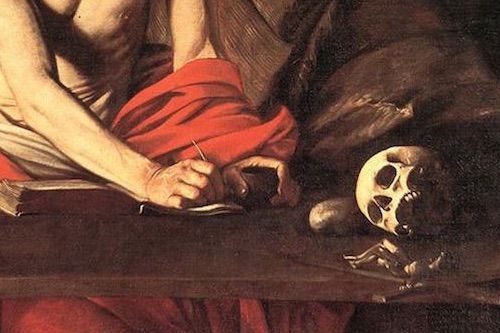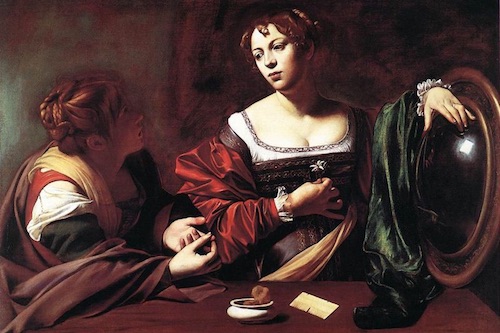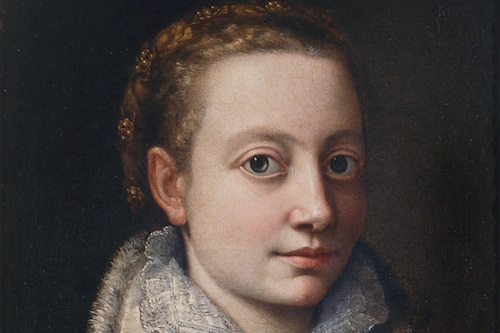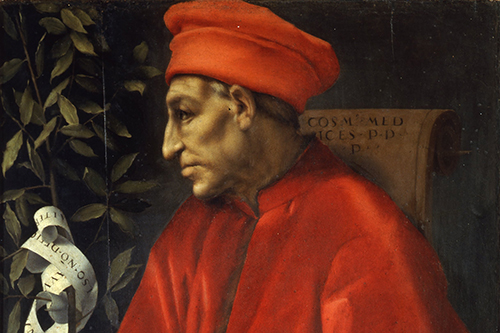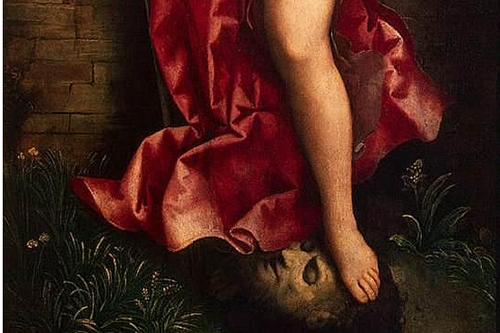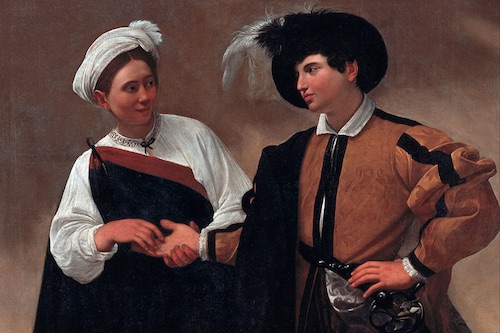Ricordato dal Bellori, il San Gerolamo della Concattedrale di San Giovanni è forse il primo dipinto maltese del Caravaggio che ci sia pervenuto, comunque anteriore alla Decollazione del Battista. È concorde il giudizio dei critici moderni sulla sua autenticità.
Commento di Ferdinando Bologna
APPROFONDIMENTO
L'opera fu realizzata a Malta, come testimonia Giovanni Pietro Bellori, poco prima della morte dell'artista, avvenuta nel 1610, che era fuggito da Roma dopo l'accusa di omicidio. Un'opera dell'esilio in cui l'intensità spirituale corrisponde ai tormenti interiori di Caravaggio ma anche alla volontà del committente conosciuto a Roma, quell' Ippolito Malaspina Marchese di Fosdinovo, alto funzionario dell'Ordine dei Cavalieri di Malta, che si voleva far riconoscere nell'ascetismo del Santo, nel cui volto è stato ritratto il Gran Maestro dell'Ordine di Malta Alof de Wignacourt, protettore dell'artista. Rubato nel 1984, il dipinto fu ritrovato quattro anni dopo e sottoposto ad un importante restauro per i forti danni subiti. A differenza delle altre due tele con lo stesso soggetto (Roma, Galleria Borghese di Roma e Museo dell'Abbazia di Montserrat in Catalogna) si nota nella solitudine della stanza disadorna e vuota come una cella, la presenza di elementi simbolici come un teschio, una candela spenta e un crocifisso che compongono una sorta di natura morta. Il grande cappello cardinalizio, tradizionale attributo del santo, ne ricorda il ruolo nella Chiesa. Caravaggio compone una scena di grande intensità psicologica, concentrando l'attenzione sul personaggio, isolato protagonista, con una sua grandiosità classica nell'ampio gesto del braccio, sfruttando i contrasti luministici, l'audace taglio compositivo, l'ambientazione ridotta a pochi tratti essenziali ma di grande efficacia. San Girolamo è intento a scrivere secondo un'iconografia collaudata che ricorda il suo ruolo fondamentale di traduttore della Bibbia dal greco al latino. Ma Caravaggio, anche nelle altre redazioni, non lo ambienta nello studiolo secondo il canone umanistico bensì nell'isolamento di una stanza spoglia, e lo rappresenta anziano, con il volto scavato e segnato delle rughe dell'asceta. Il busto nudo, ruotato in una audace torsione che lo offre completamente alla luce, si accende in virtù del riverbero del rosso del mantello panneggiato, quasi un ricordo degli antichi filosofi cinici, che si coprivano con il solo pallio per mostrare lo sprezzo delle cose materiali. Le sapienti variazioni cromatiche, la composizione per linee diagonali con un taglio da regista di teatro, rendono spettacolare e coinvolgente la potente spiritualità del santo. Fanno da contrappunto alla figura, plasmata dalla luce, gli oggetti carichi di riferimenti simbolici: la pietra allusiva alla penitenza eremitica, il teschio e la candela macabri avvertimenti di morte, il crocifisso, emblema della fede, posto il equilibrio quasi precario, sporgente dal tavolo come un punto di contatto con lo spettatore. La meditazione intensa di Girolamo, uomo di dottrina, di fede, di ascetica ricerca è quasi l'autobiografica messa in scena della propria necessità di trovare redenzione e sicurezza.
Testo di Giovanna Lazzi
©Tutti i diritti riservati
Remembered by Bellori, Saint Jerome in Saint John's Co-Cathedral may be Caravaggio's first Maltese painting to reach us. It certainly precedes The Beheading of John the Baptist, and modern critics unanimously agree that it is authentic.
Comment by Ferdinando Bologna
IN-DEPTH
"He painted Saint Jerome who, writing carefully, stretches his hand and pen to the inkwell": thus did Giovanni Pietro Bellori recall the canvas commissioned by Cardinal Scipione Borghese, copied, albeit with significant variations, in the version in the Church of St John at Valletta (Malta). Attribution of the work has been complex and controversial: it was mainly following the Milanese exhibition curated by Roberto Longhi in 1951 that critics recognised it as authentic, one of the last works made in the Roman period, and then placed alongside other famed works by the artist, such as The Madonna and Child with Saint Anne (Dei Palafrenieri) or The Calling of St Matthew (Rome, San Luigi de' Francesi). The austere father of the Church is a widely portrayed due to his translation of the Bible from Hebrew into Latin. Caravaggio depicts the saint as fully intent on his work, but almost devoured by the disquieting tension of his intellectual efforts, far from the reassuring calm of his desk as in the famed previous works by Antonello da Messina or Colantonio. In the artist’s dramatic interpretation, the ageing ascetic emerges from the absolute dark of the background, moulded by light that hovers mercilessly over the old man’s body, bringing out the wrinkles, the baldness and the white hairs of the beard, traced punctiliously one by one. The bowed head with its bright cranium corresponds to the skull evident on the table, significant "memento mori", a violent indicator of the transience of life, a very common element in still life, counterpointing the eternity of the Scriptures, witness to the word of God. The books are in turn dominant in this splendid piece of life and reality, lying on the table with the full weight of their dimensions and constituting a measure for Jerome, who interacts with the material through his outstretched arm, and inserts himself into the scene from the side, a major figure with his nude torso, recalling the iconography of the hermit ascetic but also of the ancient philosopher, yet balancing the inanimate elements. The gaudy, bright red of the cloak accentuates his figure, but directs and sets the scene, like the blinding white of the cloth cast casually onto the table and the open page. The light-imbued colour delimits space and time against the black background that lacks reference points, just as the most common iconographic attributes characterising the saint are absent: the Cardinal’s hat, the lion, or the rock in allusion to hermitic penance. The Church theologian lives in his intellectual but essentially sacred mission, yet remains a man, who cannot help but feel the weight of the fragility of being, recalled by the grim presence of the skull; he is old and so close to death, and is, like Saint Matthew, portrayed in the crudeness of his physical condition; but light wraps round him and it is that "moral light" of Caravaggio, who confers on Jerome remarkable plastic vigour, bringing out his religious and intellectual mission in the service of God’s grace, the sole guarantee for sinful man.
Text by Giovanna Lazzi
©All Rights Reserved

